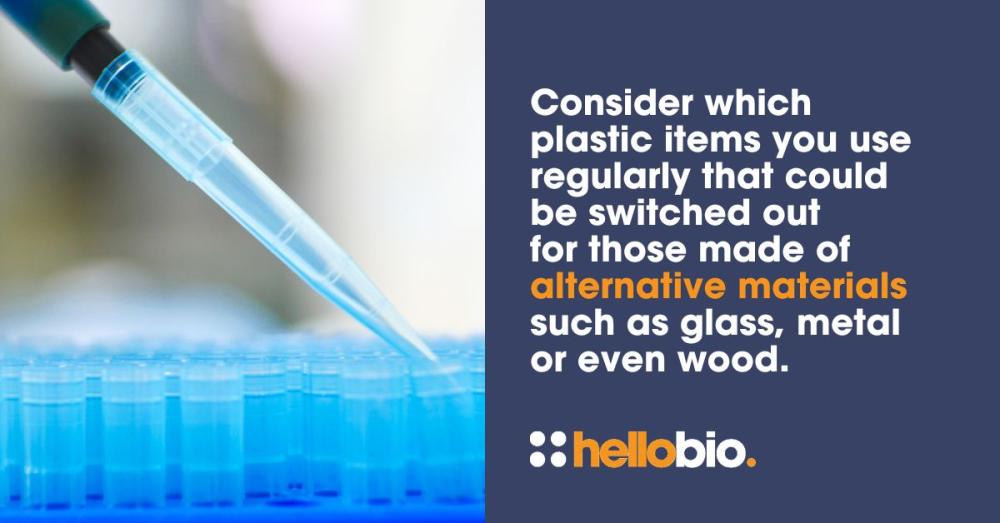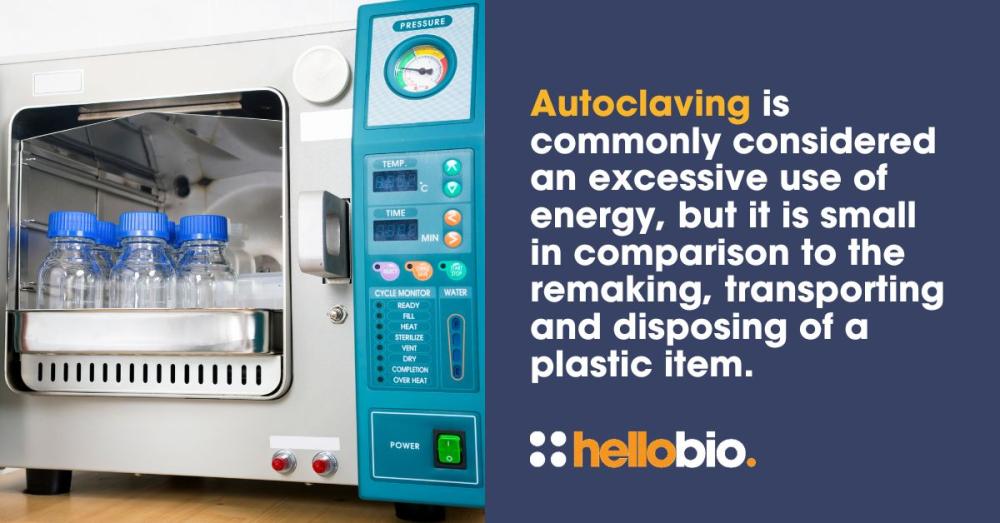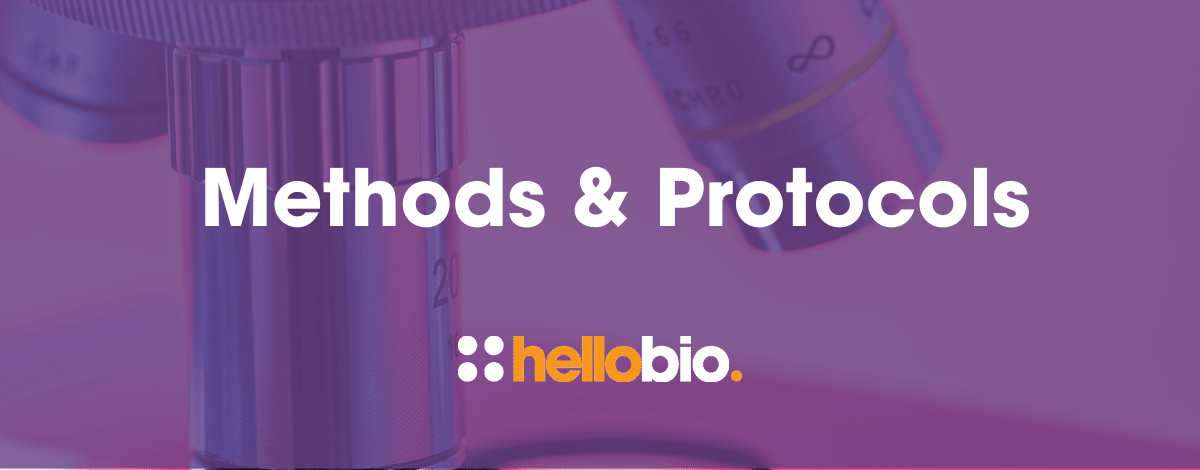Ten Ways to Reduce Plastic Waste in the Lab
It’s Plastic Free July and it’s a great time to consider how much plastic is still being used in the many thousands of science labs around the world today. Microbiology labs have for many years relied heavily on single-use plastic items such as petri dishes, pipettes and tips, tubing, spreaders, vials, and more. Although these labs are achieving great advances in life science, the impact on the environment is huge and we should always be looking for ways to reduce plastic waste in science research.
Many labs have already started implementing some great initiatives to help reduce their use of single-use plastics and make their operations as green as possible. In our Life Scientists’ Guide to Sustainability we shared the thoughts and ideas of a number of life scientists who are doing their bit to make positive changes in their labs.
When you’re working to tight deadlines we know it’s often more convenient to opt for plastic, but reusing and recycling doesn’t have to be time-consuming if effective systems are put in place. It’s not only good for the environment, but it can save money too, so that’s why we’ve put together a quick checklist of ten ways to help you reduce plastic waste in your lab…
1. Switch out plastics for other materials
Consider which plastic items you use regularly that could be switched out for those made of alternative materials. Glass is often the most obvious substitute, with a large number of commonly used items being available in glass, such as Falcon tubes, serological pipettes, universal vials, beads, filter bottles, flasks and petri dishes. Metal inoculating loops are a great alternative to plastic, although they will need to be flame sterilised before being used again. Another great tip is to use wooden toothpicks to pick bacterial colonies instead of plastic pipette tips!
2. Plan ahead with care
When planning your next experiment, think hard about the items you will need and whether you could achieve the same results using less plastic. Talk to your colleagues and mentors to ask if they have successfully carried out similar experiments using different items. Be honest about the quantities you actually need, and consider whether certain items could possibly be reused multiple times within the same experiment.
3. Think smaller, thinner & fewer
Consider using the smallest plastic vessel that is feasible for your particular experiment. It may be that you are used to ordering and using a certain size of plastic tubing because you know it can be used in a variety of different scenarios. But it could be less wasteful and could also save your lab money to use a smaller, better-suited option. Buying solutions as concentrate is another great way to reduce the amount of plastic bottles you get through, and consider using thinner plastic gloves where it is safe to do so.
4. Wash, decontaminate & autoclave
Where possible, always try to wash and reuse plastic items such as tubing rather than throwing them away. Depending on your experiment and the level of contamination, items will require different cleaning treatments in order to be used again. For some a simple rinse will be enough, however some might require autoclaving, which is a form of chemical decontamination using heat and pressure. Autoclaving is commonly considered an excessive use of energy, but it is small in comparison to the remaking, transporting and disposing of a plastic item.
5. Shop smarter
When ordering items for your lab, think carefully about quantities and suppliers. Have conversations with your regular suppliers to find out if they have glass or other alternatives, and consider the sustainability of their operations. Order items in bulk to reduce the amount of bubble wrap and polystyrene used in packaging when transporting the items to you. Speak to other lab managers within your building and arrange to place large orders together where possible to reduce packaging waste.
6. Share items with other labs
Consider sharing items with other labs and groups within the same building. Some institutes have building-wide inventories which are tracked via an online system. This allows researchers to instantly see which items are available and can prevent unnecessary repeat orders of items which may actually be available in different departments. Take a look at our Life Scientists’ Guide to Sustainability for specific examples of such systems and their operations.
7. Use a specialist waste collection service
Many institutes will already have arrangements in place with specialist waste contractors who will collect uncontaminated items for recycling such as disposable gloves, visors, facemasks, and other plastic-based PPE. Speak with the waste management team in your building to find out what is already available and make use of these services where possible. Also, engage with your suppliers to find out if they offer to collect used packaging. Many will encourage the return of packaging items such as polystyrene pieces in order for them to be used again.
8. Label & use colour coded bins
Make recycling as quick and easy as possible by using colour coded bins and ensuring that they are labelled to avoid confusion. Blue bins are commonly used for paper, aluminium and plastic recyclables although there is no universal colour code, so labelling is important to ensure clarity. Your lab’s recycling and reuse systems should be explained fully to every new staff member on arrival.
9. Create incentives for staff to recycle
Encourage staff to recycle and make it as easy as possible for them to do so. Consider creating simple reward schemes, such as a prize or special treat for the team at the end of each month if recycling or plastic use targets are achieved. Do not allow plastic coffee cups, water bottles, cutlery or straws into the lab. Put clear systems in place to remind staff of the rules and make them as simple as possible to follow.
10. Join a national scheme
There are a number of national and international initiatives and online tools available to encourage labs to become greener and to reduce their plastic use. LEAF (the Laboratory Efficiency Assessment Framework) is a great example of a tool developed by Sustainable UCL containing actions users can take to save plastics, water, energy and other resources in their labs. Those taking part in the self-assessment programme are awarded Bronze, Silver or Gold levels depending on how many sustainability actions they take. You can find more examples of such schemes in our Life Scientists’ Guide to Sustainability.
More advice on lab sustainability from Hello Bio
If you’d like to read more about lab sustainability, we have some more great resources on our blog. Take a look here:
- Simple Ways to Make Your Lab More Eco-Friendly - guest blog by Anne Vielle
- To Sustainability and Beyond: Becoming a Green Lab Superhero - guest blog by Oisín C. Joyce
- Podcasts by Scientists: The Caring Scientist - spotlight on a lab sustainability podcast
- The Life Scientists’ Guide to Lab Sustainability
_________________________________________________
If you enjoyed this article, why not check out the other resources available on our blog. We are passionate about supporting life scientists including early career life scientists and PhD students - with really low-priced reagents, antibodies and biochemicals, early career scientist grants, and resources to help with both personal and professional development. We know how tough it is - so we hope you find these helpful!
More General Support for Life Scientists
For advice on wellbeing, dissertations, presenting at conferences, wellbeing, PhD support, networking and lots more, we have a huge range of articles to help - just click below:
Save up to 50% on our high purity reagents...
When you get to the stage of planning your experiments, don't forget that we offer a range of low-cost, high-purity agonists, antagonists, inhibitors, activators, antibodies and fluorescent tools (yes - they really are around half the price of other suppliers!) You can use our Quick Multi-Search Tool to search for lots of products in one go, and the range includes:
- Enzyme inhibitors and activators
- Chemogenetic ligands
- Ion channel modulators
- GPCR & ionotropic receptor ligands
- Cell biology reagents & biochemicals
Technical resources
Try our Molarity Calculator: a quick and easy way to calculate the mass, volume or concentration required for making a solution.
Try our Dilution Calculator: an easy way to work out how to dilute stock solutions of known concentrations
We also offer a comprehensive range of technical resources including antibody protocols and methods, product guides and mini-reviews:
And finally, don't forget to check back in with our blog regularly for our latest articles. If there’s something you’d love to contribute to the community, whether that’s an interview or article, drop us a line at hello@hellobio.com
---






















